IOENGINE, LLC appealed decisions of the U.S. Patent and Trademark Office Office’s Patent Trial and Appeals Board that found unpatentable certain claims of U.S. Patent Nos. 8,539,047; 9,059,969; and 9,774,703.
The patents relate to a tunneling client access point (TCAP) that is a “highly secure, portable, power efficient storage and data processing device” that, upon plugging in to an access terminal (desktop or laptop computer), may make use of the terminal’s traditional user interface and input/output peripherals while the TCAP provides storage, execution, and/or processing resources. The TCAP tunnels data through the access terminal by allowing data to be provided through the access terminal’s input/output facilities for the user to observe without the data actually residing on the access terminal.
Claim 1 of the ‘969 patent is representative and recites
1. A portable device configured to communicate with a terminal comprising a processor, an input component, an output component, a network communication interface, and a memory configured to store executable program code, including first program code which, when executed by the terminal processor, is configured to present an interactive user interface on the terminal output component,
and second program code which, when executed by the terminal processor, is configured to provide a communications node on the terminal to facilitate communications to the portable device and to a
communications network node through the terminal network communication interface, the portable device comprising:
- (a) an external communication interface configured to enable the transmission of communications between the portable device and the terminal;
- (b) a processor; and
- (c) a memory having executable program code stored thereon, including:
(1) third program code which, when executed by the portable device processor, is configured to
provide a communications node on the portable device to coordinate with the communications node on the terminal and establish a communications link between the portable device and the terminal, and facilitate communications to the terminal and to a communications network node through the terminal network communication interface; and
(2) fourth program code which is configured to be executed by the portable device processor in response to a communication received by the portable device resulting from user interaction with the interactive user interface; wherein the portable device is configured to facilitate communications through the communication node on the terminal and the terminal network interface to a communications network node.
Appellee Ingenico Inc. (Ingenico) filed three petitions for IPR of the Challenged Patents. The Board issued Final Written Decisions finding certain claims of the Challenged Patents unpatentable. IOENGINE appeals, arguing that the Board incorrectly construed the claim term “interactive user interface,” incorrectly applied the Printed Matter Doctrine. Under the Printed Matter Doctrine, certain “printed matter” is given no patentable weight because it is deemed to fall outside the scope of patentable subject matter. The doctrine does not allow patent protection for claims that are directed solely to the content of printed information.
IOENGINE contended that the Board erroneously construed the claim term “interactive user interface” to mean “a display containing interface elements with which a user
may interact to result in a computer taking action responsively.” In each of its Patent Owner Responses, IOENGINE requested that the Board construe “interactive user interface” to mean “a display containing interface elements with which a user may interact to result in the terminal taking action responsively by responding to the user.” On appeal, however, IOENGINE proposed a new
claim construction that it never proffered to the Board: “a presentation containing interface elements with which a user may interact to result in the device executing code to present / affect the presentation taking action responsively by modifying what is presented.” In contrast to its position
during the IPRs, IOENGINE argues on appeal that the claims encompass either the terminal or the portable device taking responsive action.
According to the Federal Circuit, IOENGINE forfeited its proposed claim construction by not presenting it to the Board during the IPR. The lesson to be learned here is to make your arguments early in proceedings, not for the first time in an appeal to the Federal Circuit.
The Federal Circuit then turned to IOENGINE’s argument that the Board erred in applying the printed matter doctrine to determine that a cited reference, U.S. Patent Application Pub. No. 2003/0020813A1 (Iida), anticipates claims 4 and 7 of the ’969 patent and claims 61–62 and 110–11 of the ’703 patent. IOENGINE argued that the Board incorrectly applied the printed matter doctrine to accord no patentable weight to certain claim limitations that recite “encrypted
communications” and “program code.”
The Federal Circuit and its predecessor have long recognized that certain ‘printed matter’ falls outside the scope of patentable subject matter under U.S. patent law. Although “printed matter” historically referred to claim elements involving actual “printed” material, today the doctrine has expanded to include any information claimed for its communicative content, regardless of medium.
The Federal Circuit applies a two-step test to determine whether a limitation should be accorded patentable weight under the printed matter doctrine. First, they determine whether the
limitation in question is directed toward printed matter. A limitation is printed matter only if it claims the content of information. Put another way, printed matter is “matter claimed for what it communicates. Only if the limitation in question is determined to be printed matter do we proceed to the second step, which asks whether the printed matter nevertheless should be given patentable weight. Printed matter is given such weight if the claimed informational content has a functional or structural relation to the substrate.
Claims 4 and 7 of the ’969 patent, to which the Board applied the printed matter doctrine, both require the “fourth program code [] when executed by the portable device processor, [to be] configured to cause a communication to be transmitted to the communication network node.” Claim 4 of the ’969 patent recites “wherein the communication caused to be transmitted to the communication network node facilitates the transmission of encrypted communications from the communication network node to the terminal.” In other words, claim 4 contemplates the portable device sending a communication to the communication network node, which in turn facilitates
sending encrypted communications to the terminal. The Board determined that the term “‘encrypted communications’ claims only communicative content, i.e. printed matter” because it found “nothing in the claim that requires anything beyond sending and receiving data, even if the
data is in an encrypted form.” The Board further found that there was “no functional relationship of the encrypted data to the communication carrying it” because nothing in the claims required “the data being used or manipulated” or “any processing of encrypted data beyond the transmission of the same.” The Board thus concluded that the limitation should be afforded no patentable
weight.
The Federal Circuit disagreed with the Board that the claimed “encrypted communications” constitute printed matter. Printed matter is matter that is claimed for its communicative content—i.e., the content specifically being communicated. The fact that there is a communication itself is not content; content is what the communication actually says. Nor is the form of a communication,
such as whether the communication is encrypted, considered to be content. Printed matter encompasses what is communicated—the content or information being communicated—rather than the act of a communication itself.
The Federal Circuit previously found that an FDA label providing dosage instructions for using a medical product is printed matter, that a label instructing a patient to take a drug with food is printed matter, that instructions on how to perform a DNA test are printed matter, and that numbers printed on a wristband are printed matter. Unlike those examples, which claim communicative content such as medical instructions or numbers, the encrypted communications here are not being claimed for any content that they are communicating. The Federal Circuit therefore found that the claimed “encrypted communications” do not constitute printed matter.
The lesson here is that encrypted communications escape the printed matter doctrine. It can be said that this decision narrows the printed matter doctrine by implying that a claim limitation is not printed matter unless it explicitly recites specific informational content. This holding may make it more difficult for examiners to use the printed matter doctrine. When obviousness rejections against patent claims rely on the printed matter doctrine, they should be challenged using this case.
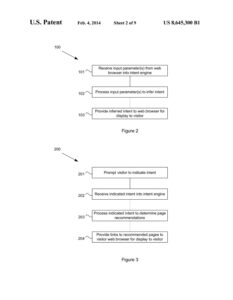 USC brought suit for infringement against Facebook, Inc. (now Meta Platforms, Inc.), asserting that its “News Feed” feature infringes claims 1–17 of U.S. Patent No. 8,645,300. The software patent relates to a search engine software method for predicting which webpages to recommend to a web visitor based on inferences of the visitor’s “intent.” The software patent states that website navigation can be enhanced “by recording a visitor’s intent and recording page rankings that indicate how well the pages of a website match the visitor’s intent.” The software patent further explains that visitor intent can be inferred from historical intent data, the Uniform Resource Locator, the user’s visits, and optional user intent confirmation. The lower court, the Western District of Texas, granted summary judgment that claims 1–17 are invalid.
USC brought suit for infringement against Facebook, Inc. (now Meta Platforms, Inc.), asserting that its “News Feed” feature infringes claims 1–17 of U.S. Patent No. 8,645,300. The software patent relates to a search engine software method for predicting which webpages to recommend to a web visitor based on inferences of the visitor’s “intent.” The software patent states that website navigation can be enhanced “by recording a visitor’s intent and recording page rankings that indicate how well the pages of a website match the visitor’s intent.” The software patent further explains that visitor intent can be inferred from historical intent data, the Uniform Resource Locator, the user’s visits, and optional user intent confirmation. The lower court, the Western District of Texas, granted summary judgment that claims 1–17 are invalid.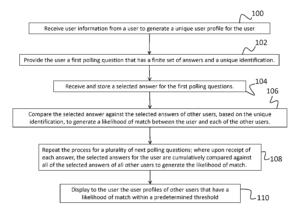 Trinity Info Media, LLC sued Covalent, Inc. for infringement of U.S. Patent Nos. 9,087,321 and 10,936,685 relating to methods and systems for connecting users based on their answers to polling questions. U.S. Patent No. 9,087,321 teaches that its claimed invention is “directed to a poll-based networking system that connects users based on similarities as determined through poll answering and provides real-time results to the users. The claimed invention of the ’685 patent is “directed to a poll-based networking and ecommerce system that connects users to other users, or products, goods and/or services based on similarities as determined through poll answering and provides real-time results to the users.
Trinity Info Media, LLC sued Covalent, Inc. for infringement of U.S. Patent Nos. 9,087,321 and 10,936,685 relating to methods and systems for connecting users based on their answers to polling questions. U.S. Patent No. 9,087,321 teaches that its claimed invention is “directed to a poll-based networking system that connects users based on similarities as determined through poll answering and provides real-time results to the users. The claimed invention of the ’685 patent is “directed to a poll-based networking and ecommerce system that connects users to other users, or products, goods and/or services based on similarities as determined through poll answering and provides real-time results to the users.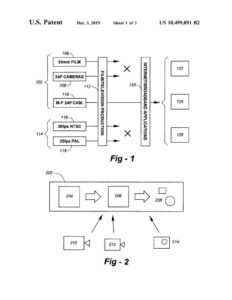 A multi-format digital video product system capable of maintaining full-bandwidth resolution while providing professional quality editing and manipulation of images, which is capable of conserving bandwidth while preserving data is not patent-eligible.
A multi-format digital video product system capable of maintaining full-bandwidth resolution while providing professional quality editing and manipulation of images, which is capable of conserving bandwidth while preserving data is not patent-eligible.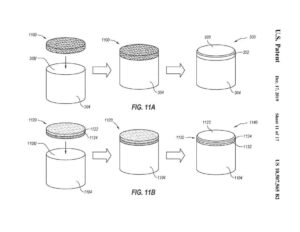 The ITC took 35 U.S.C.
The ITC took 35 U.S.C. 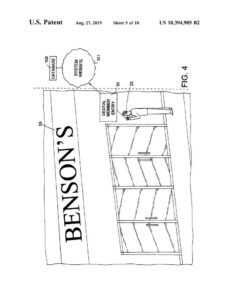 Though creating digital location histories is not patent eligible, a method of enhancing digital search results may be patent eligible.
Though creating digital location histories is not patent eligible, a method of enhancing digital search results may be patent eligible.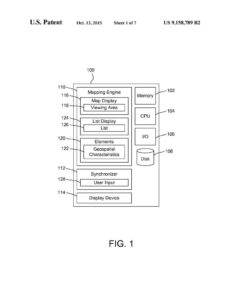 Functionally recited claims to organizing and displaying visual information are not patent-eligible.
Functionally recited claims to organizing and displaying visual information are not patent-eligible.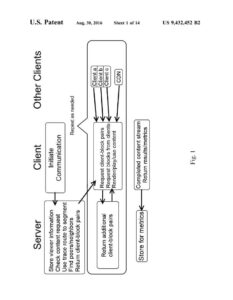 At the pleadings stage, all that is required to survive a motion to dismiss based on Alice are plausible allegations in a complaint that the claims are patent-eligible.
At the pleadings stage, all that is required to survive a motion to dismiss based on Alice are plausible allegations in a complaint that the claims are patent-eligible.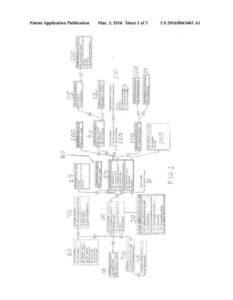 Mr. Smith’s argued that the first step in analyzing a claim must be to determine whether the claim is useful. And if it is useful, it is by law patent-eligible. The Federal Circuit disagreed.
Mr. Smith’s argued that the first step in analyzing a claim must be to determine whether the claim is useful. And if it is useful, it is by law patent-eligible. The Federal Circuit disagreed.